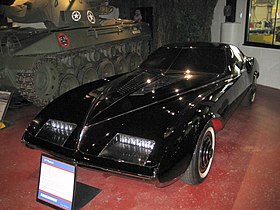
The General Motors Company (GM) is an American multinational automotive manufacturing company headquartered in Detroit, Michigan, United States. It is the largest automaker in the United States and was the largest in the world for 77 years, until losing the top spot to Toyota in 2008.

Pontiac or formally the Pontiac Motor Division of General Motors, was an American automobile brand owned, manufactured, and commercialized by General Motors. Introduced as a companion make for GM's more expensive line of Oakland automobiles, Pontiac overtook Oakland in popularity and supplanted its parent brand entirely by 1933.

William Crapo Durant was a leading pioneer of the United States automobile industry and co-founder of General Motors and Chevrolet. He created a system in which a company held multiple marques – each seemingly independent, with different automobile lines – bound under a unified corporate holding company. Durant, along with Frederic L. Smith, co-founded General Motors, as well as Chevrolet with Louis Chevrolet. He also founded Frigidaire.

William L. Mitchell was an American automobile designer. Mitchell worked briefly as an advertising illustrator and as the official illustrator of the Automobile Racing Club of America before being recruited by Harley Earl to join the Art and Color Section of General Motors in 1935.

LaSalle was an American brand of luxury automobiles manufactured and marketed, as a separate brand, by General Motors' Cadillac division from 1927 through 1940. Alfred P. Sloan, GM's Chairman of the Board, developed the concept for four new GM marques - LaSalle, Marquette, Viking and Pontiac - paired with already established brands to fill price gaps he perceived in the General Motors product portfolio. Sloan created LaSalle as a companion marque for Cadillac. LaSalle automobiles were manufactured by Cadillac, but were priced lower than Cadillac-branded automobiles, were shorter, and were marketed as the second-most prestigious marque in the General Motors portfolio. LaSalles were titled as LaSalles, and not as Cadillacs. Like Cadillac — named after Antoine de la Mothe Cadillac — the LaSalle brand name was based on that of another French explorer, René-Robert Cavelier, Sieur de La Salle.

In the automotive industry, rebadging is a form of market segmentation used by automobile manufacturers around the world. To allow for product differentiation without designing or engineering a new model or brand, a manufacturer creates a distinct automobile by applying a new "badge" or trademark to an existing product line.

Harley Jarvis Earl was an American automotive designer and business executive. He was the initial designated head of design at General Motors, later becoming vice president, the first top executive ever appointed in design of a major corporation in American history. He was an industrial designer and a pioneer of modern transportation design. A coachbuilder by trade, Earl pioneered the use of freeform sketching and hand sculpted clay models as automotive design techniques. He subsequently introduced the "concept car" as both a tool for the design process and a clever marketing device.

The B platform is a full-size rear-wheel drive car platform produced by General Motors (GM) from 1926 to 1996. Originally made for Oldsmobile and Buick, all of General Motors's five main makes would use it at some point. It was closely related to the original rear-wheel drive C and D platforms, and was used for convertibles, hardtops, coupes, sedans, and station wagons. With approximately 12,960,000 units built, divided across four marques, the 1965-70 B platform is the fourth best selling automobile platform in history after the Volkswagen Beetle, Ford Model T and the Lada Riva.

Wayne K. Cherry is an American car designer educated at Art Center College of Design and employed by General Motors from 1962 through 2004, retiring as Vice President of Design. Cherry worked for General Motors in the United States from 1962 until 1965, when he moved to the United Kingdom to take a position with General Motors' Vauxhall Motors subsidiary, becoming Design Director at Vauxhall in 1975. In 1983 General Motors consolidated all European passenger car design under Cherry and made him Design Director at General Motors' Adam Opel AG subsidiary. Cherry returned to the United States in 1991 and in 1992 became General Motors Vice President of Design. Cherry retired from General Motors in 2004.
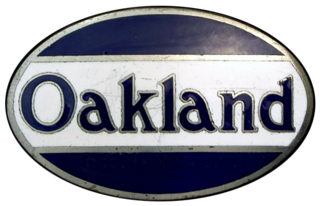
The Oakland Motor Car Company of Pontiac, Michigan, was an American automobile manufacturer and division of General Motors. Purchased by General Motors in 1909, the company continued to produce modestly priced automobiles until 1931 when the brand was dropped in favor of the division's Pontiac make.
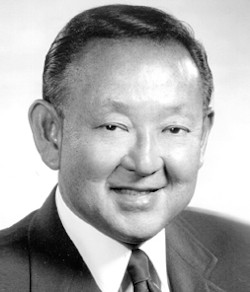
Lawrence Kiyoshi (Larry) Shinoda was a noted American automotive designer who was best known for his work on the Chevrolet Corvette and Ford Mustang.
Bryan Edward Nesbitt is an automobile designer and currently head of General Motors Corporation International Operations Design, based in Shanghai, China. Nesbitt is also brand chairman for Wuling and Baojun, two automakers with which GM has joint ventures.

In the late 1920s, American automotive company General Motors (GM) launched four companion makes to supplement its existing lineup of five-passenger car brands, or makes. The companion makes were LaSalle, introduced for the 1927 model year to supplement Cadillac; Marquette, introduced in 1929 for 1930 to supplement Buick; Pontiac, introduced for 1926 to supplement Oakland; and Viking, introduced for 1929 to supplement Oldsmobile. GM's fifth existing brand, Chevrolet, did not receive a companion make. With the exception of Viking, each of the companion makes were slotted below their "parent make" in GM's pricing hierarchy.
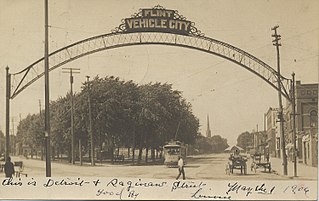
Flint, Michigan is a city which previously relied on its automotive industry, and still does to an extent. Over the past several decades, General Motors plants in Genesee County have experienced re-namings, management shifts, openings, closures, reopenings, and spinoffs.
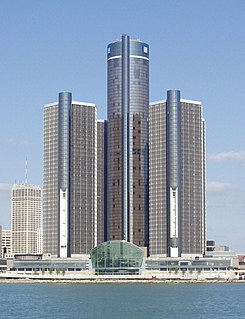
The history of General Motors (GM), one of the world's largest car and truck manufacturers, dates back more than a century and involves a vast scope of industrial activity around the world, mostly focused on motorized transportation and the engineering and manufacturing that make it possible. Founded in 1908 as a holding company in Flint, Michigan, as of 2012 it employed approximately 209,000 people around the world. With global headquarters at the Renaissance Center in Detroit, Michigan, United States, General Motors manufactures cars and trucks in 35 countries. In 2008, 8.35 million GM cars and trucks were sold globally under various brands. Current auto brands are Buick, Cadillac, Chevrolet, GMC, and Wuling. Former GM automotive brands include La Salle, McLaughlin, Oakland, Oldsmobile, Opel, Pontiac, Hummer, Saab, Saturn, Vauxhall, Daewoo and Holden.

The ChevroletCorvair Monza GT (XP-777) was a mid-engined experimental prototype automobile built in 1962 and based on the early model Chevrolet Corvair series. As it was essentially a concept car, the Monza GT did not enter production.

Edward T. Welburn is an automobile designer and former General Motors' Vice President of Global Design, a role in which he served from 2003 to 2016 and the same position that Harley Earl and Bill Mitchell once held. To date, Welburn still holds the distinction of having been the highest-ranking Black-American in the global automotive industry. He has overseen the development of recent GM products, such as the Chevrolet Corvette, Cadillac Escalade and Chevrolet Camaro. Welburn has overseen groundbreaking concepts such as:the Oldsmobile Aerotech, Cadillac Ciel, and Buick Avista.
Irvin W. Rybicki was an American car designer, and became vice president of General Motors design on August 1, 1977, only the third person to hold that position and did so until his retirement in October 1986.

The Buick XP-300 is a concept car created by General Motors in 1951. It is a counterpart to GM's Le Sabre, with which it shares many common mechanical components, including its 335-horsepower (250 kW) supercharged V8 engine, which could run on either gasoline or methanol. Representative of GM's "long and low" design philosophy in the 1950s, the XP-300 measures over 16 feet (4,900 mm) in total length but is only 39.1 inches (990 mm) in height. It includes numerous features ranging from push-button power windows and seats to hydraulic jacks and de Dion axles.
